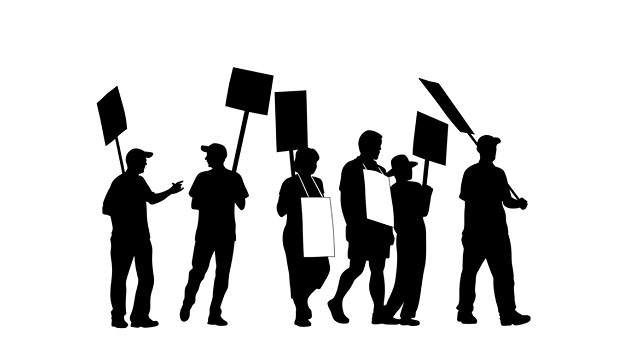While 'major work stoppages' increased slightly, all work stoppages were up significantly in 2022
The government's data lacks the bigger picture as nonunion workers organizeed a 'high proportion' of strikes (~32%) in 2022.
On Wednesday, the Department of Labor’s Bureau of Labor Statistics (BLS) released its annual report on Major Work Stoppages. However, the strikes tracked by the BLS are only a fraction of all work stoppages that took place last year.
“…nonunion workers continued to organize a high proportion of strikes (~32%) in 2022…” —Worker Institute Labor Action Tracker
According to the BLS, there were 23 major work stoppages involving 1,000 or more workers in 2022, up slightly from the average of 16 major work stoppages between 2002-2022.
“The lowest annual total of major work stoppages was 5 in 2009 and the highest was 470 in 1952,” noted the BLS.
According to the BLS release:
There were 120,600 workers involved in major work stoppages that began in 2022. Service-providing industries accounted for 118,400 workers, or 98 percent of idled workers over the year. Within service-providing industries, the education and health services sector accounted for the idling of 106,300 workers, the educational services sector for 69,500 workers, and the health care and social assistance sector for 36,800 workers. [Emphasis added.]
While the BLS’ Major Work Stoppages Report indicated a small uptick in large work stoppages, a new report published by Cornell University’s ILR Worker Institute states that, in 2022, there were 424 work stoppages (417 strikes and seven lockouts) involving approximately 224,000 workers.
Although work stoppages increased in number over 2021, a considerable number of work stoppages occurred amongst non-union workers (~32%) , according to the report’s authors.
“Several important findings emerge from our 2022 data,” the report’s authors state.
First, the total number of work stoppages increased by ~52% (279 to 424) and the total number of approximate workers involved in work stoppages increased by ~60% (~140,000 to ~224,000) from 2021 to 2022. Second, workers in the accommodation and food services industry organized more work stoppages in 2022 (144) than any other industry, accounting for over one-third of all events. However, these work stoppages involved approximately 7,000 workers, or ~3% of the total workers involved in work stoppages in 2022. The vast majority (131, or ~91%) of work stoppages in the accommodation and food services industry were led by either Starbucks workers organizing with the Starbucks Workers United campaign or fast-food workers organizing with the Fight for $15 campaign. Third, the majority of all workers involved in work stoppages came from the educational services industry (~135,380, or ~60%). Fourth, nonunion workers continued to organize a high proportion of strikes (~32%) in 2022, though these strikes were considerably smaller than work stoppages by unionized workers. Fifth, most work stoppages in 2022 were relatively short in duration, with ~46% lasting one day or less and two-thirds lasting fewer than five days. [Emphasis added.]
Read the full BLS release here.
Read Cornell University’s ILR Worker Institute Labor Action Tracker here.





